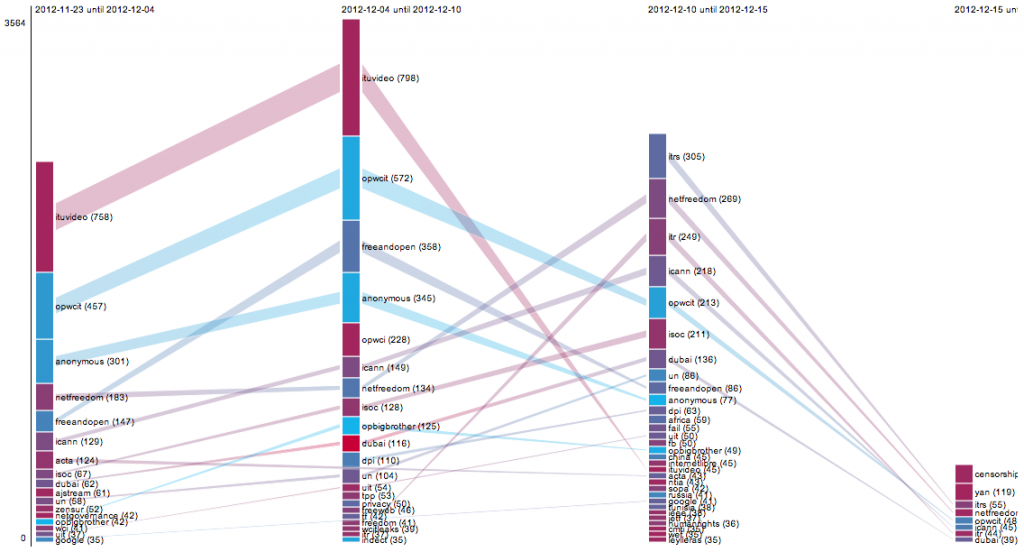About
Issue mapping online introduces a set of digital techniques for the detection, analysis and visualisation of topical affairs. The main purpose of this resource is to provide practical instructions and examples to guide social and cultural researchers in the use of these techniques. It also introduces the main principles that inform the wider methodology.
An interdisciplinary approach, issue mapping uses data analysis to answer questions like ‘is this topic an issue?’, ‘who are its actors?’ ‘what are its animating concerns?’, and ‘where are the issues happening (in which media, which field sites, which institutional locations)?’

Resisting the assumption that we already ‘know’ the answer to these basic questions, issue mapping online answers them by using techniques of network and textual analysis to detect issue formations in digital networked content.
Online media like the Web and social platforms offer special opportunities for analysing and visualising contemporary issue dynamics for a variety of reasons: because of the wealth of issue traces accessible online; because of the dynamic features of these media; their formatted quality (links, tags); and the possibilities they offer for data visualisation. Online data tools like Issuecrawler and T-CAT have been developed that take advantage of such medium-specific features of Web and social media content in order to analyse and visualise current affairs.
Over the last decade or so, a range of case studies, reports and writings on issue mapping online has been produced with the aid of these tools by an international community of researchers: the Digital Methods Initiative (University of Amsterdam), Mapping Controversies (Sciences Po Media Lab and partners), the Techno-anthropology group at the UAA-CHP, the govcom.org foundation (Amsterdam), the Public Data Lab and the Centre for Interdisciplinary Methodologiesat the University of Warwick.
This blog offers an introduction to this emerging area of work and provides methodological guidance for the use of issue mapping techniques in social and cultural research.
